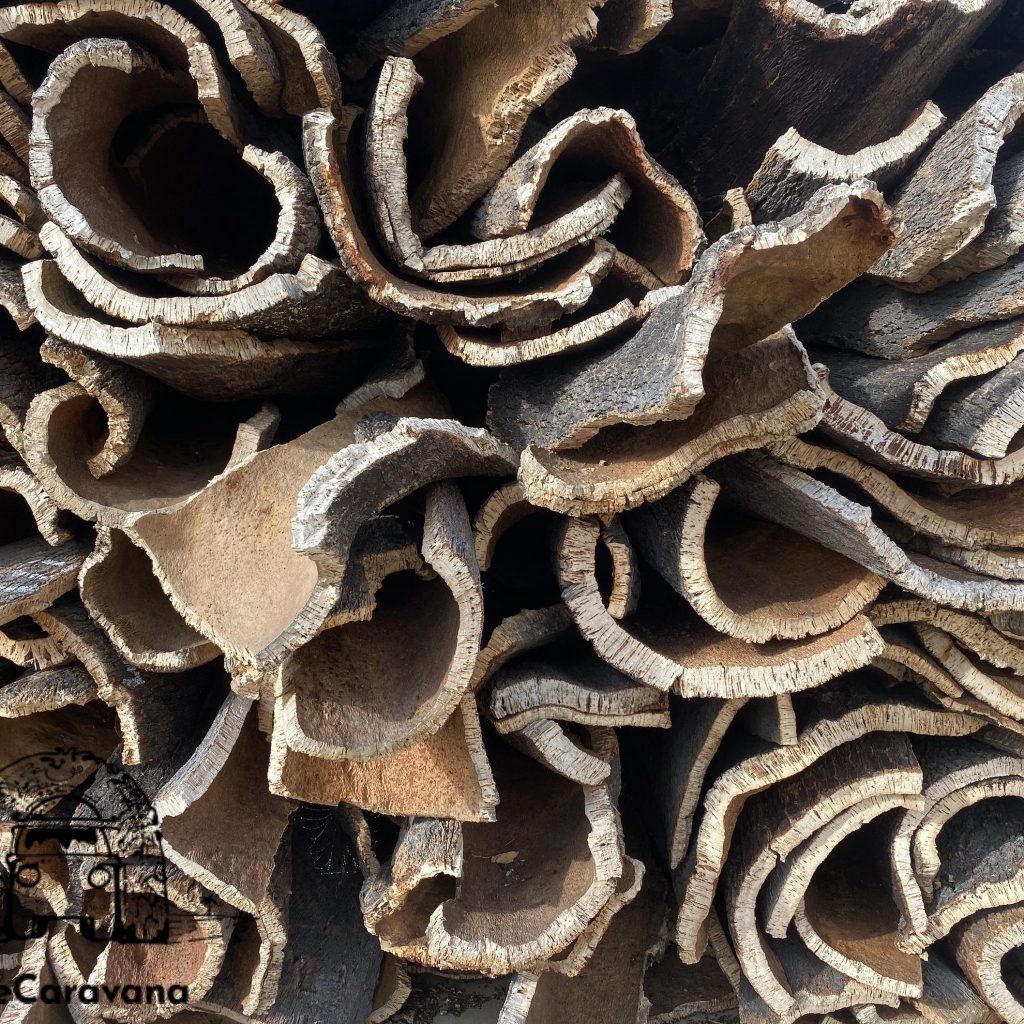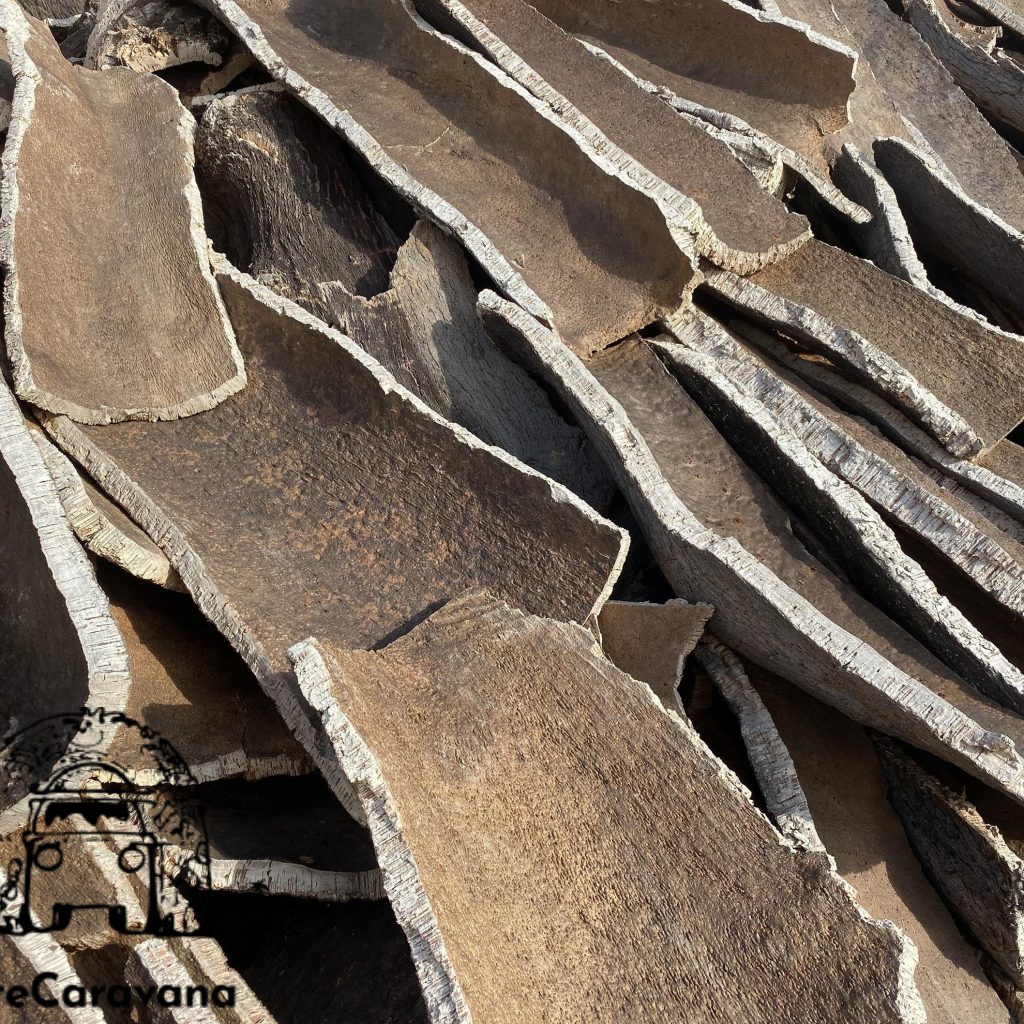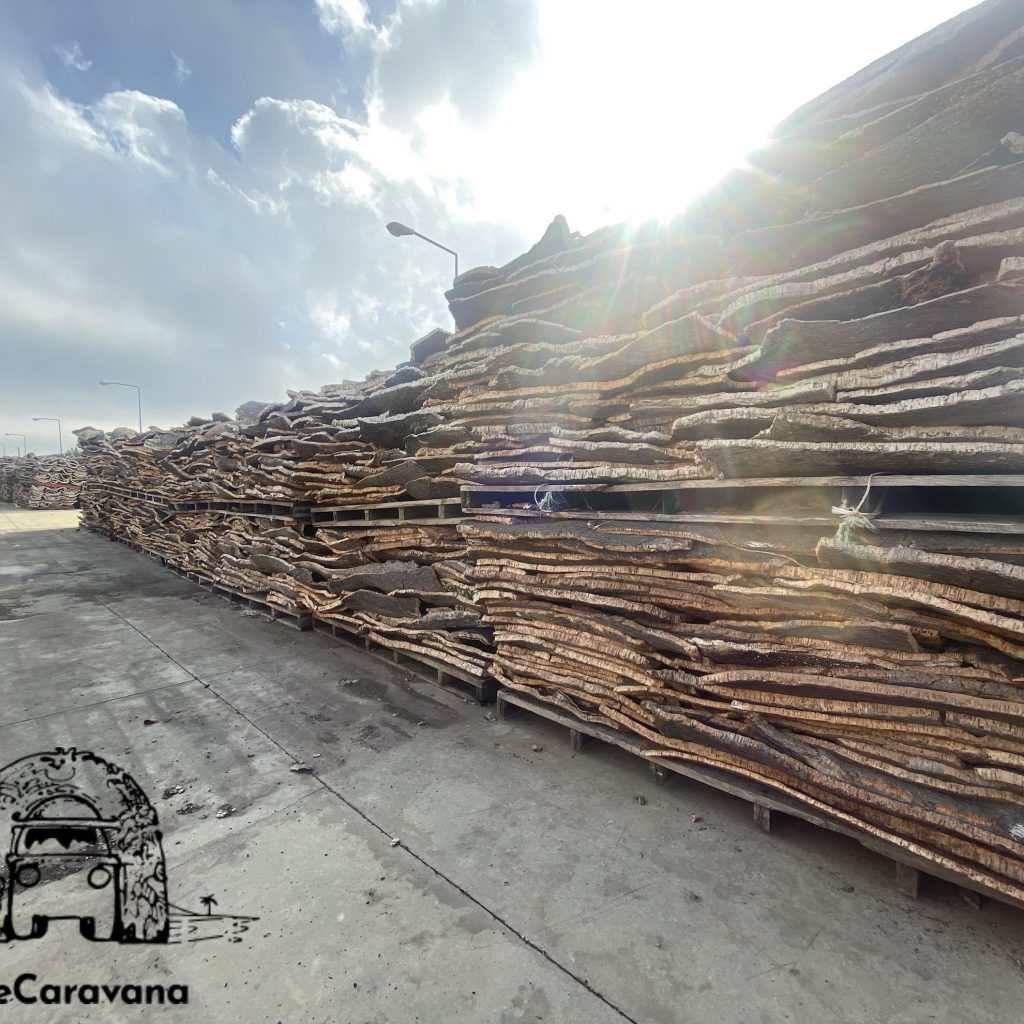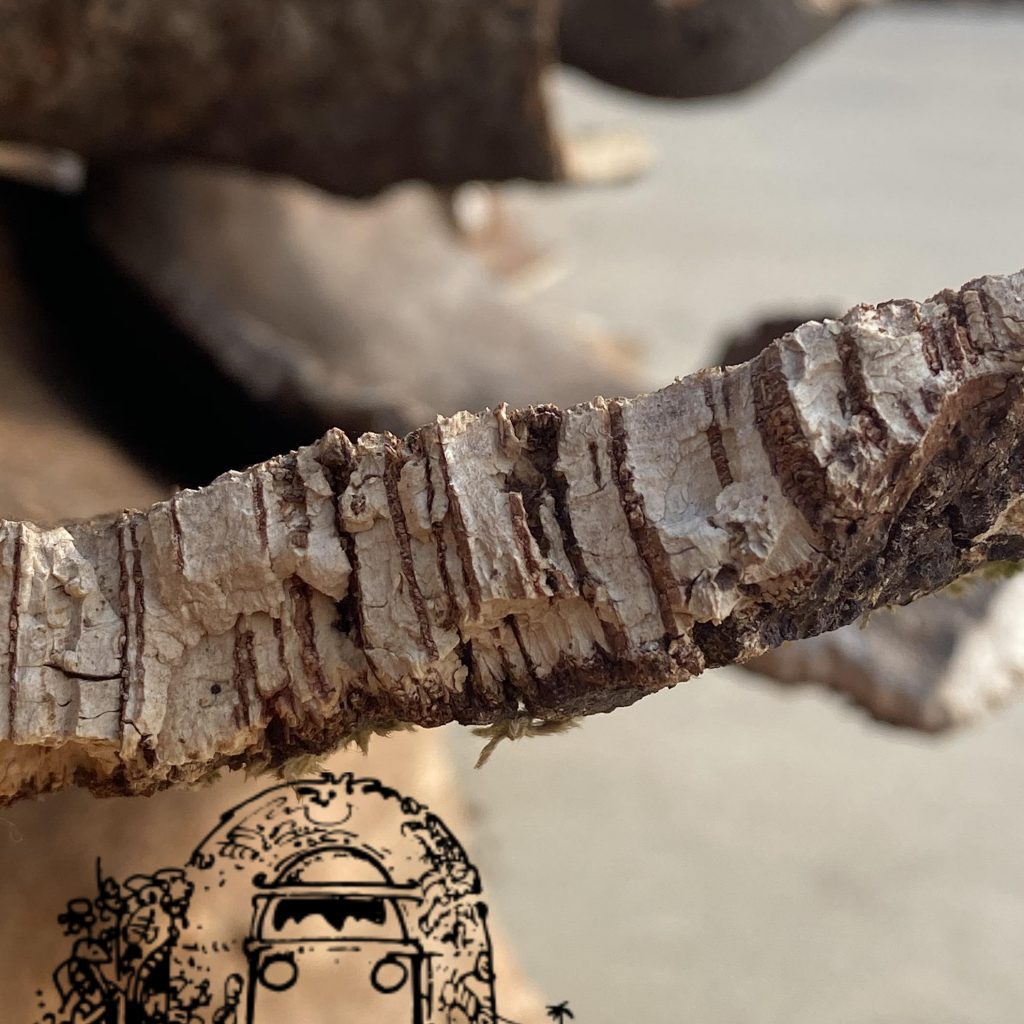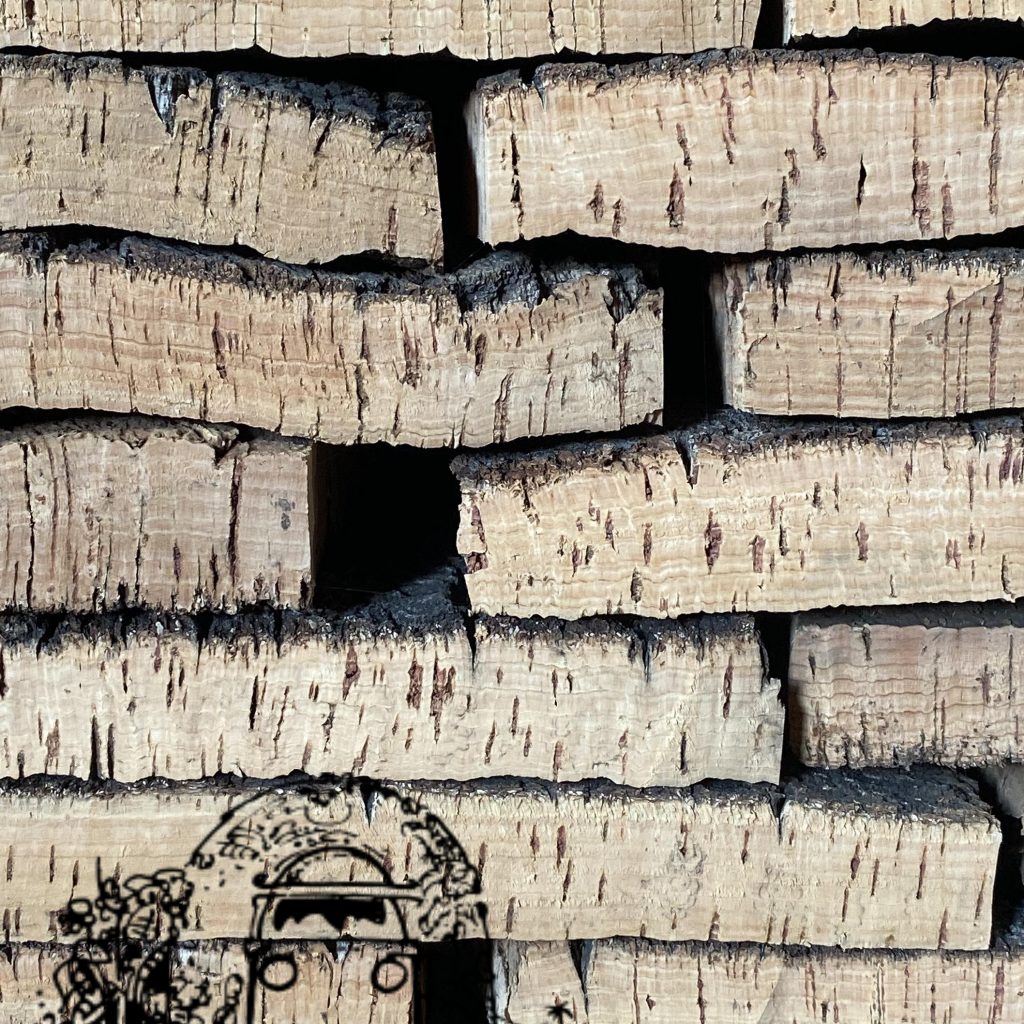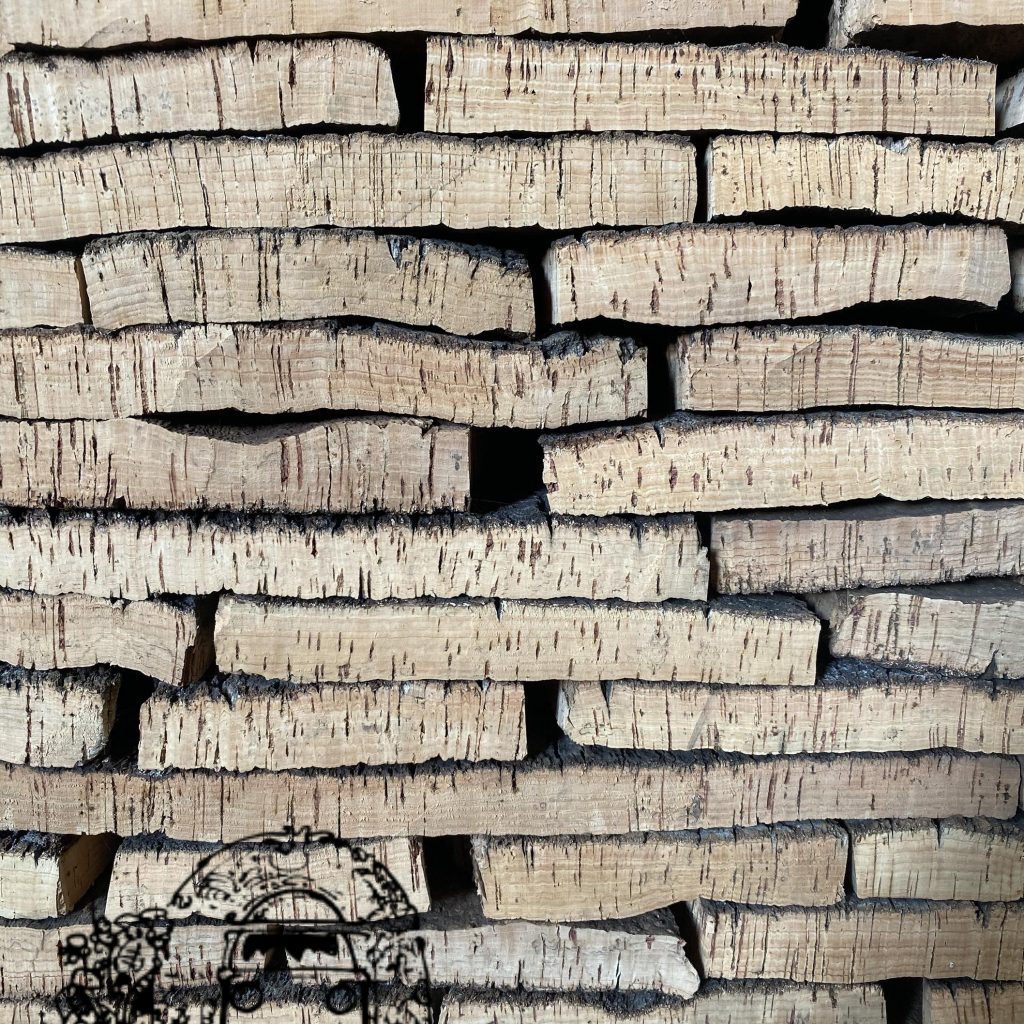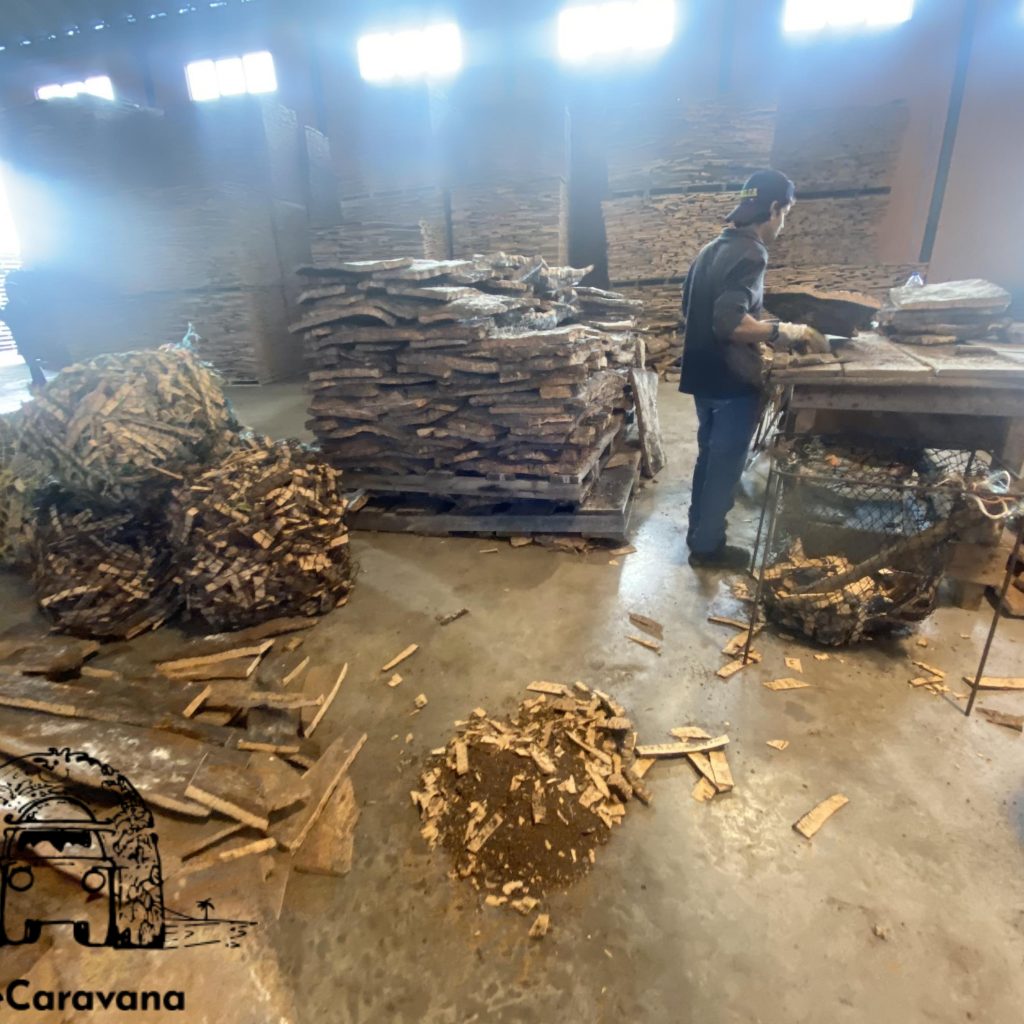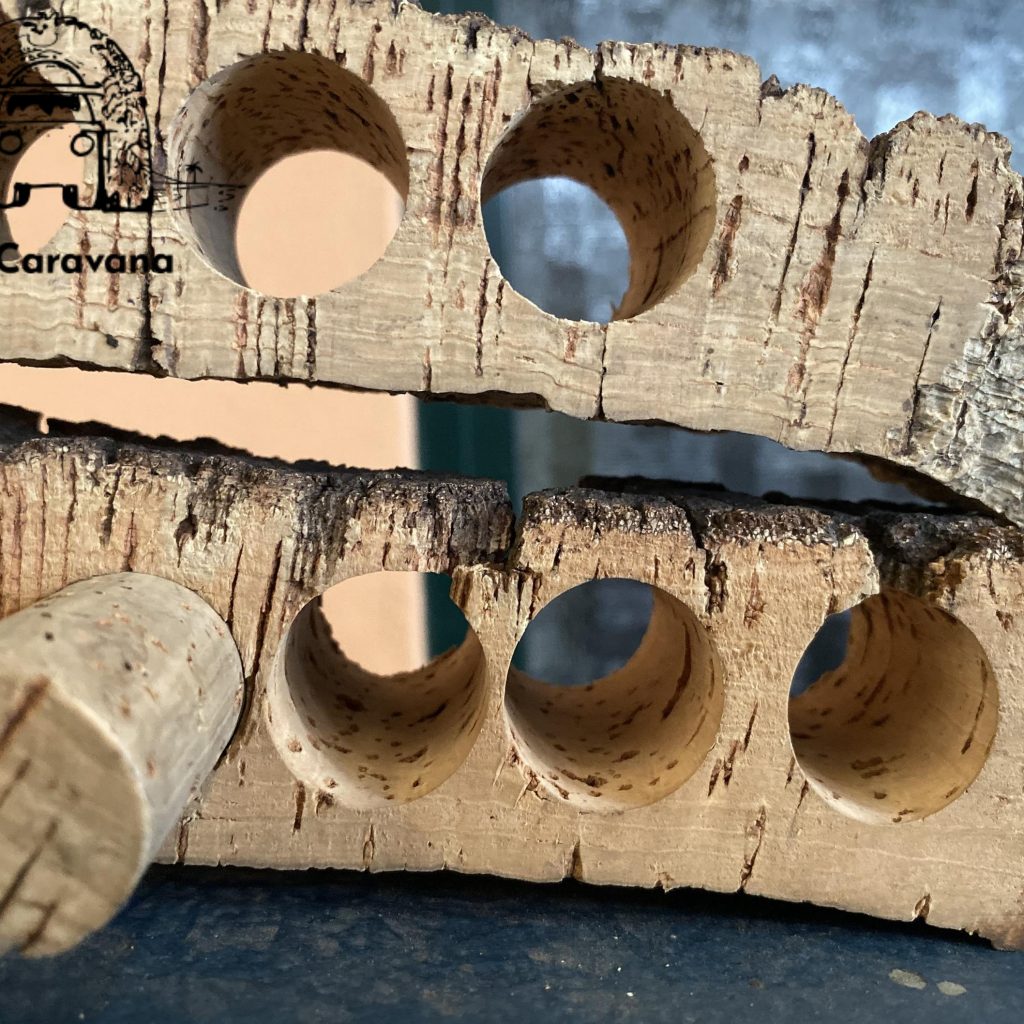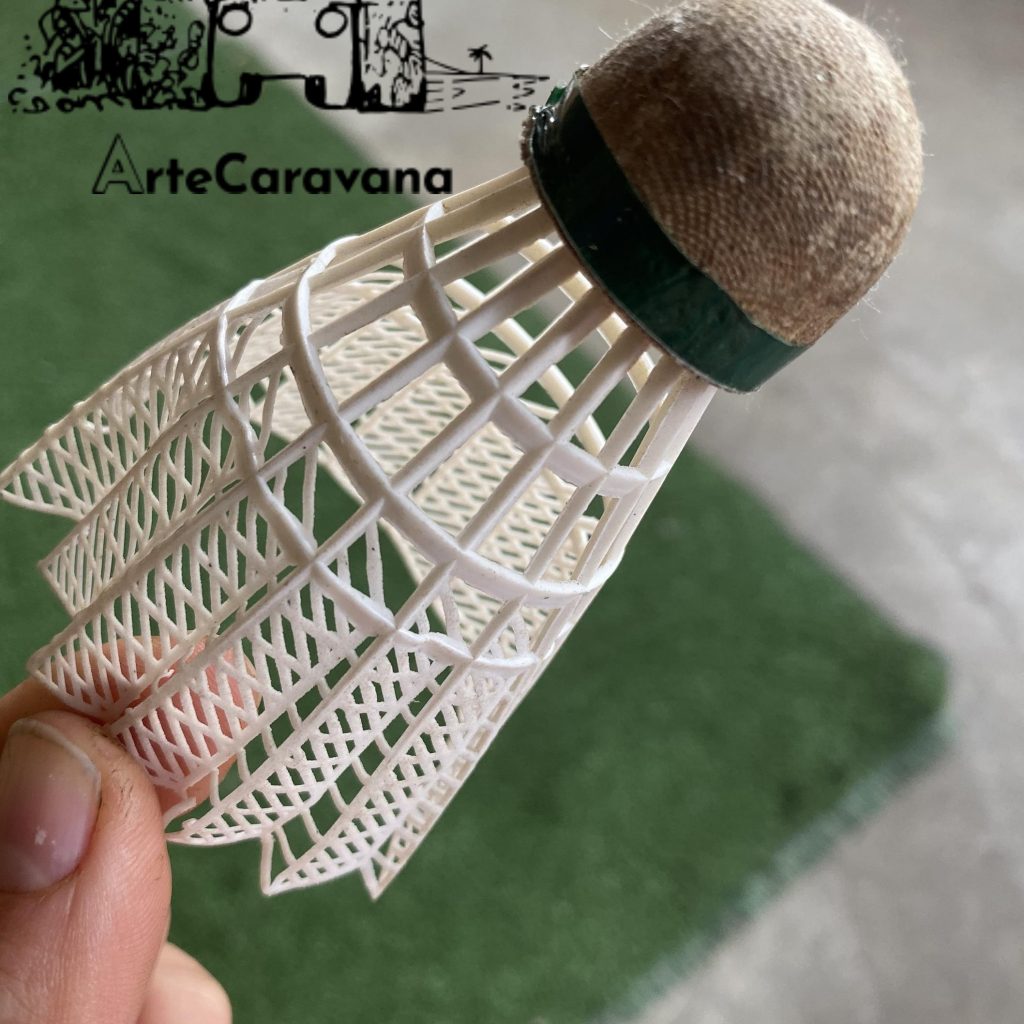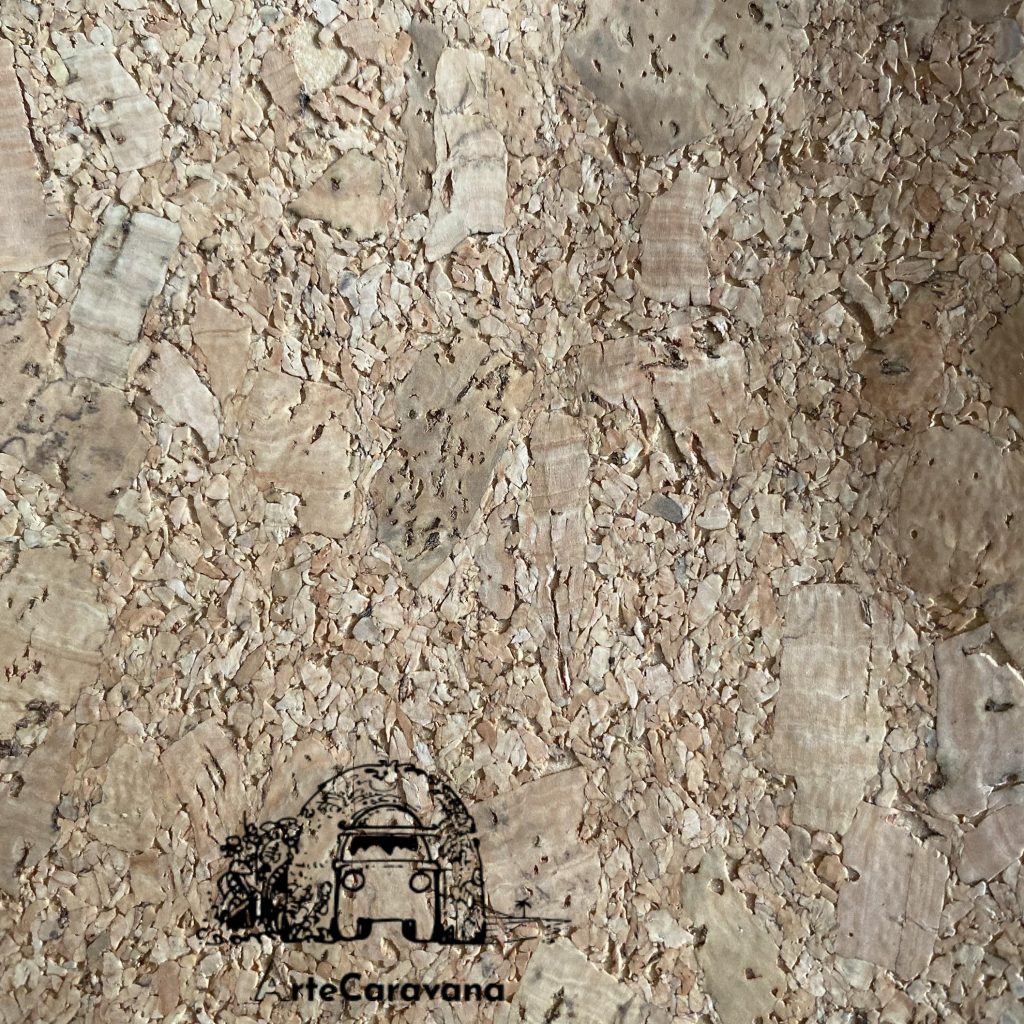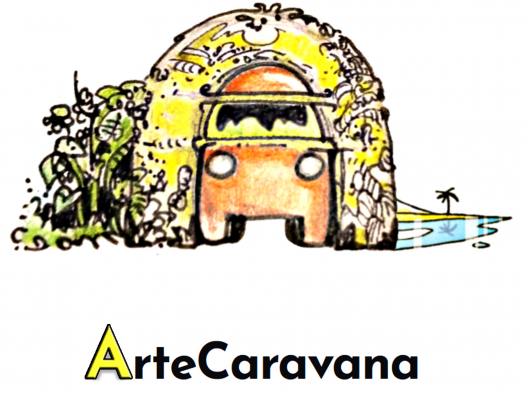
Leather handicraft straight from the workshop on four wheels
Wandering through Iberian lands
Cork – the (natural) national treasure of Portugal
28/01/2020 2:10 PM
Portugal is a beautiful country but sadly, from being a world wide empire it ended up as a forgotten piece of land at the end of Europe. We have been really lucky to explore Portugal and its treasures and, what might be a surprise for some, Portugal has a whole bunch of treasures - some of them are hidden but what's more important most of t are natural. Today we are happy to share some detailed information about cork - one of the most important goods exported by Portugal to many different places all around the globe.
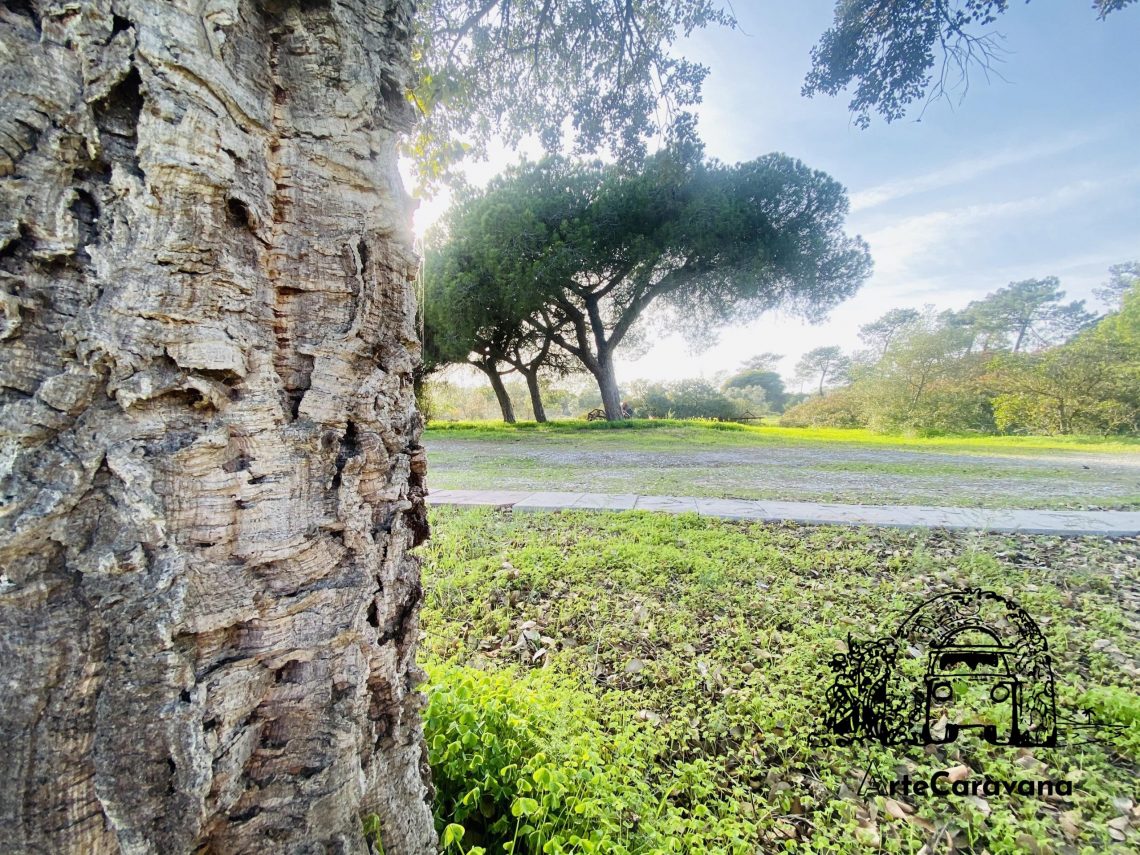
What is cork? It’s a processed bark from a special type of oak called cork oak. You probably are familiar with some products made of cork - the easiest example is of course a... cork stopper that you can find in wine bottles. If suddenly you come up with an idea of starting a plantation of cork oaks you need to know that you won’t get rich, probably your children neither but your grandchildren might expect some incomes. Why? Because after planting an acorn you have to wait minimum 25 years for the first extraction and it won’t be a high quality cork anyway. Then the cork is extracted every 9 years and the best quality you can obtain is after the third cut so it’s minimum 43 years of waiting for a high quality cork appropriate for corks used in wine bottles.
Of course the cork extracted earlier is not thrown away, it’s used for other purposes because you can create almost everything using this material: wallets, bags, postcards, umbrellas, shoes, clothes, isolation, insides of the space ships and so on and so forth. It’s an extremely universal material - it’s light, water-, heat- (it protects the tree from high temperatures during the fires), sound- and gas- resistant (that’s why it’s used on space shuttles to isolate the reactor). It is also used as fertilizer but mainly the idea is to obtain corks for wine bottles that is why France is an important importer as it needs cork for its precious champagne.
So what happens after 25 years when the cork can be finally extracted from the cork oak? The extraction takes place in the summer months and it’s brought by the owners of the plantations to the cork factory (we visited one of them - Eco-Cork Factory | Eco-Fábrica de Cortiça | Francisco Carrusca in São Brás de Alportel - and all the photos and video are from there except from the images of trees that were taken in another place). After the bark is taken away the tree is marked with a number that is the last digit of the year when the next extraction is planned. For example if we extract the cork in 2010 then we put a nine on the ‘naked’ tree to know that the next extraction is planned for 2019. The bark is taken to the factory where it undergoes a preselection and it’s decided what it will be used for. The factory buys the cork from the plantations (an interesting fact is that there is a special unit of weight called arroba which equals 15kg) and then it has to be boiled. Cork oaks bark, like any other bark, is really hard so to make it flexible it’s necessary to boil it for at least one hour (in 100 C degrees water). The factory was really clean because nothing is wasted there, even the dust is not thrown away - it’s used to maintain the temperature in the oven overnight for boiling the water. In this way there is no need to start a new fire every morning again.
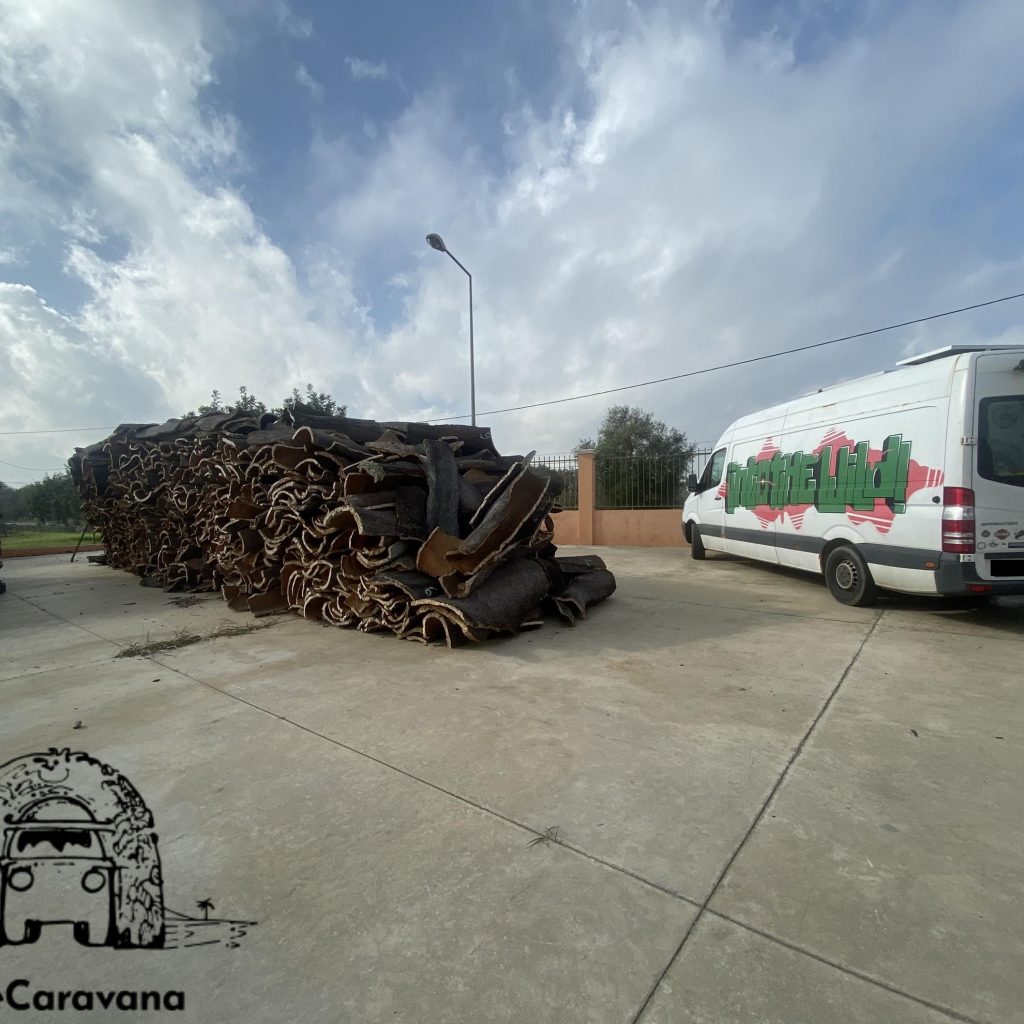
The fire is made only with wood. After boiling, the cork becomes more flexible and it’s possible to make it straight. It needs around 1 week in summer and 2 in winter to dry. Then it’s divided according to the caliber - there is a perfect one for cork stoppers and thinner or thicker ones are used for other products.
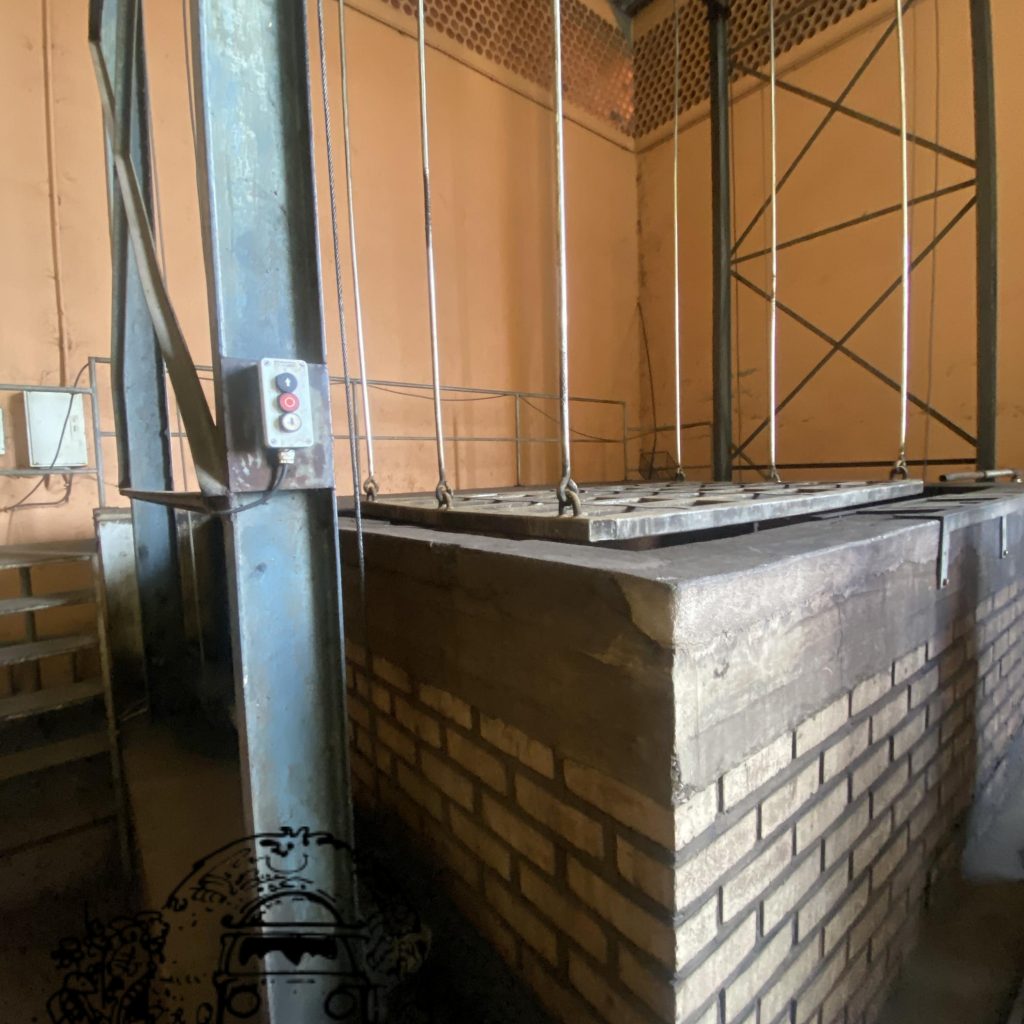
A special employee is cutting the cork with a curved knife to see its quality (it's only visible after cutting). When visiting the factory we noticed that the cork was covered in mould. We were explained that it’s normal because it’s not always possible to dry it completely but as cork has also antibacterial properties it’s not a problem at all.
There is another special measuring unit called foot of the line - 13 lines mean the caliber 13. There are 6 different calibers. We measure them with a special ruler which is applied perpendicularly to the cork (photo below).
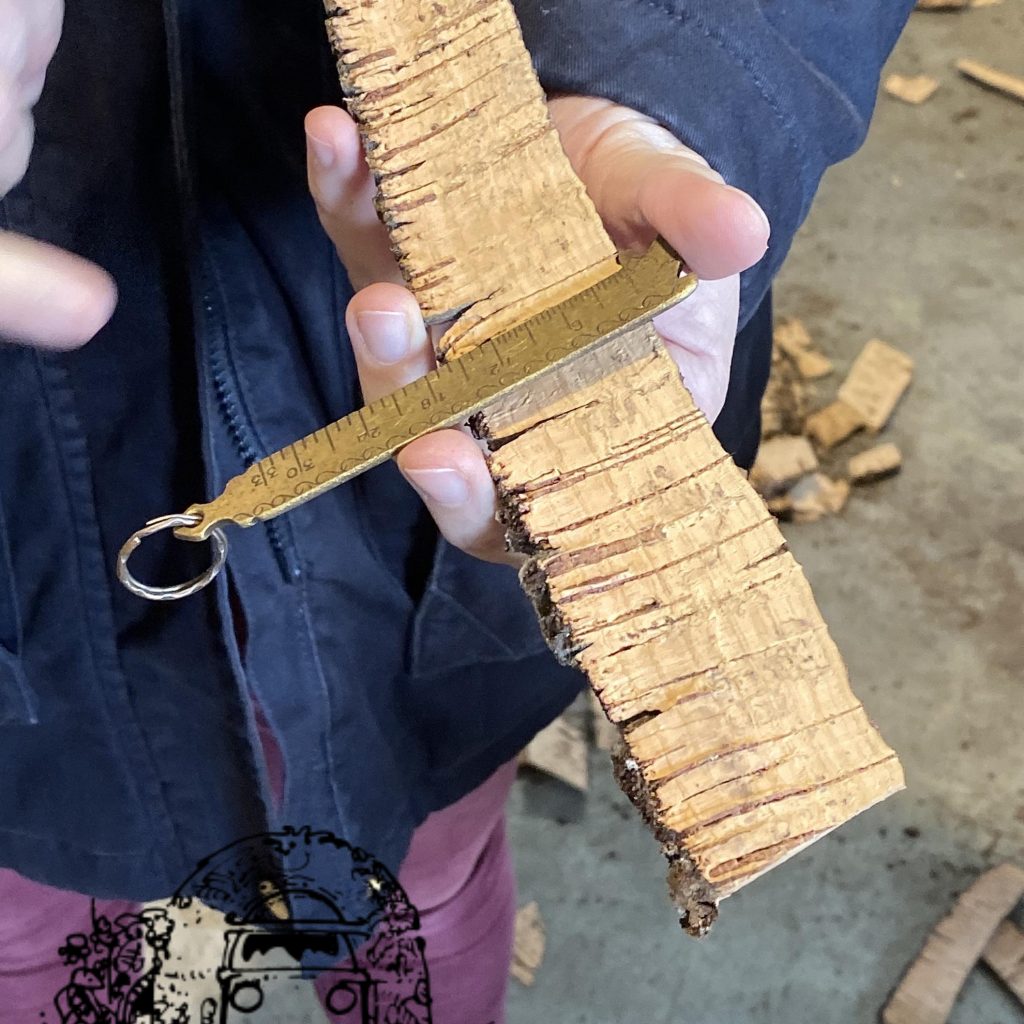
The horizontal lines visible on the photos indicate the age of the cork - one line equals one year. Obviously normally the cork will have 9 - why it’s nine years? After years of trying and investigating it was decided that after 9 years the bark is ready and perfect for extraction. When it’s too old for example it starts to split in two. There are some exceptions from the nine year rule - some owners decide to leave it for 10 years but in that case it’s easy to calculate that in 90 years they will extract only 9 times while the others 10 so obviously it’s not preferred because of losing the income. I understood that sometimes they chose 10 years because of weather conditions. After the fire of the forest the cork is still extracted but they leave the bark 2-3 years longer on the tree.
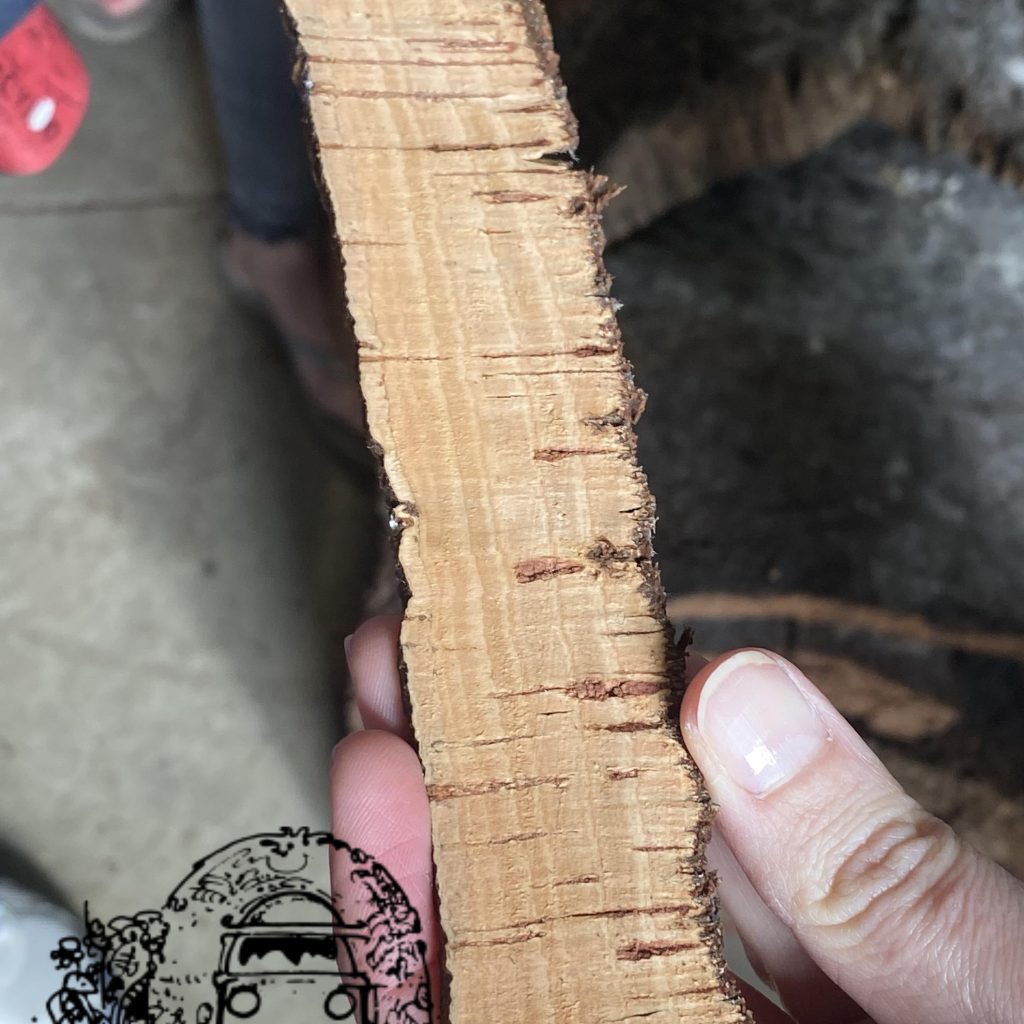
Then the cork stoppers are made and the rest is send to variety of factories which create different products.
Interesting facts:
- 50% of world production is portuguese
- cork grows only in the Mediterranean sea zone (southern coast of Spain, Portugal, Greece etc.)
- cork is exported mainly to France when it comes to cork stoppers and to Holland (for isoaltion)
- a lot of interesting things are made of cork even gaskets for cars and for medical equipment
- the first „uses” of cork date back to Roman empire where sandals and of course cork stoppers were made
As #ArteCaravana we thought it might be interesting to combine leather with cork so we bought cork fabric (it's created by laser cutting really thin layers of cork and gluing it to paper or other material). Those of you who are following our instagram or FB page have probably seen our first projects but there are coming soon so stay tuned and let us know what do you think about this combination.
The entire series of articles about Algarve:
